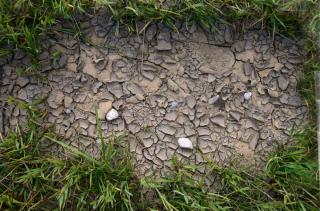

Bulbs must be planted in light ground if they are to develop properly. However, the soil of some gardens is clay and often waterlogged during the winter months.
Follow our advice and you will be able to see your bulbs bloom even in wet and waterlogged soil:
In this type of soil, clay, what is most damaging to bulbs is that they sit in water for extended periods of time.
They start to rot and thus are not able to develop into a plant that blooms.
If you increase soil drainage, you should succeed in growing any kind of bulbous plant.
 First, you must dig a deeper hole than you normally would with light soil.
First, you must dig a deeper hole than you normally would with light soil.If you follow this technique, you’ll be prepared to face any bad weather that might flood your soil.
And you’ll have the great joy of seeing your flowers bloom all over the garden!
When you do this for a lot of bulbs, you end up with quite a lot of excess soil. Don’t just toss it to the side: build up a raised bed nearby! This will add volume to your lot, giving you more opportunities to play with perspective as you envision different layouts.
In the raised beds, follow the same rules strictly as above, and you’ll effortlessly grow all sorts of bulbs in there, too:
Read also:
Credits: iBulb
Thanks very much for this advice.